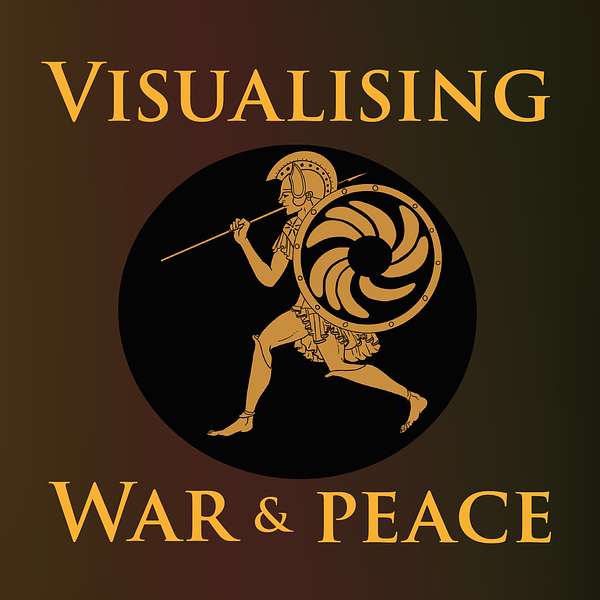
Visualising War and Peace
How do war stories work? And what do they do to us? Join University of St Andrews historian Alice König and colleagues as they explore how war and peace get presented in art, text, film and music. With the help of expert guests, they unpick conflict stories from all sorts of different periods and places. And they ask how the tales we tell and the pictures we paint of peace and war influence us as individuals and shape the societies we live in.
Visualising War and Peace
Strategy-making and/as Storytelling with Phillips O’Brien
In this week’s podcast, Alice and Nicolas discuss strategy with Prof. Phillips O’Brien. Phil joined the School of International Relations at the University of St Andrews in 2016 as Professor of Strategic Studies; he also directs the university’s interdisciplinary Institute for the Study of War and Strategy, which has some obvious areas of overlap with the Visualising War project. His interests in warfare and strategy range widely, with a particular focus on the early twentieth century. Most recently, in 2019 Phil finished his biography of Admiral William D Leahy, Roosevelt’s Chief of Staff and (as Phil puts it in the title) the ‘second most powerful man in the world’, who became de facto president of the United States when Roosevelt’s health started to fail.
Strategic studies look at how decisions about war (including avoidance of war and concluding them through treaties) are made at the highest political level, and what influence those decisions have on the course of wars and battles. Strategy-making is an act of visualisation in itself; and of course it can be heavily influenced by past habits of visualising war. We discuss the connection between strategy-making and storytelling, and how descriptions of strategy end up shaping the ways we visualise individual conflicts and war more broadly.
Among other topics, we talk about:
- The role of grand strategies in wars from antiquity via WWII to more recent conflicts in the Middle East – do grand strategies win wars?
- How our understanding of and approaches to grand strategy have changed over time, and how they might develop in the future
- What shapes generals’ and politicians’ strategic decision-making, including the influence of past war stories in promoting particular 'strategic' mindsets
- Whether you can teach and learn strategy, and the best ways to do that, including war gaming
- How grand strategy is visualised and narrated, and how it coexists and sometimes competes with other narratives
- Whether it makes sense to wage wars at all
We hope you enjoy the episode!
For a version of our podcast with close captions, please listen here. You can find out more about Phil O’Brien’s work on his website at the University of St Andrews; also be sure to check out the website of the university’s Institute for the Study of War and Strategy.
For more information about the Visualising War project, individuals and their projects, access to resources and more, please have a look on the University of St Andrews Visualising War website.
Music composed by Jonathan Young
Sound mixing by Zofia Guertin